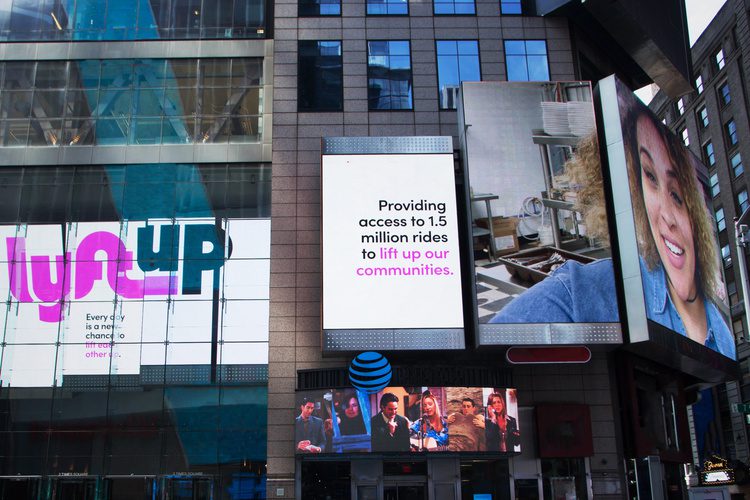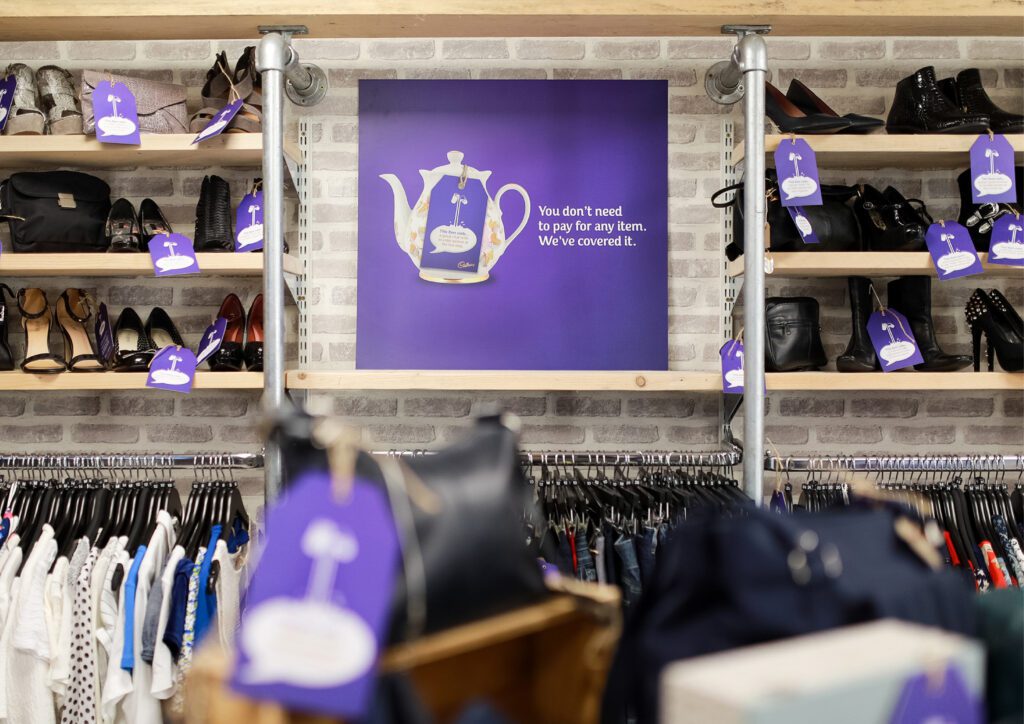Cause Marketing: Driving Positive Change Through Brand Impact
In a world filled with ads, ads that do not look like ads are the ones that actually make an impact, don’t you agree? Because when you look at your phone, there are display ads hampering the experience. Look up and there’s a huge billboard looking at you, tempting you to place that next order.
It’s a scenario your consumers are intimately familiar with as well. That brings us to a crucial question: how can brands cut through ad fatigue, forging meaningful connections amid this advertising saturation? The answer lies in authentic marketing strategies, and one such impactful approach is cause marketing.

At its core, cause marketing taps into the influential ability of brands to persuade people to not just buy a product but to invest in a meaningful idea or purpose. It goes beyond the transactional nature of traditional marketing. It aims to create a positive impact, whether on a small local scale or on a broader societal level.
However, the challenge lies in leveraging cause marketing authentically for your brand without stepping into the realm of clichés. Or falling victim to causewashing. So, in this blog, we’ll look at some cause marketing examples to understand how to adopt this strategy while maintaining brand authenticity. But before that, let’s quickly discuss the key benefits of cause marketing for brands.
Unveiling the Advantages of Cause Marketing For Brands
Let’s first address the billion-dollar question – is it really necessary for brands to invest regularly in cause marketing? Do cause marketing campaigns make a difference to brands? Well, we’ll let the following statistics answer your questions.
- Cause marketing helps build a positive brand image by showing consumers that the brand is committed to making a difference. Furthermore, this positive brand image helps with customer retention. Given that the likelihood of selling to existing customers is about 60% to 70%, customer retention is a critical factor for brands.
- The second main benefit of cause marketing is building a positive image as an employer. Data shows that nearly 60% of job seekers expect company CEOs to voice out against social causes. So, companies with a strong cause marketing strategy end up attracting the best talent.
- Moreover, data indicates that around 71% of consumers are likely to purchase from brands with a strong purpose. Therefore, by employing cause marketing to throw the spotlight on a cause they stand for, brands can help boost sales.
- Cause marketing plays a huge role in humanizing a brand. Businesses evolve from being just a name to an approachable brand when they consistently talk about the values they stand for and connect with customers who share the same values.
- When you connect with customers based on shared values, you are fostering a strong community. And building communities helps in nurturing loyalty in customers.
To tap into these advantages, you need the best strategies to leverage cause marketing. Let’s talk about these strategies by looking at some successfully executed cause marketing campaigns from well-known brands around the world.
Cause Marketing – Examples and Lessons to Take Away
1. Warby Parker – Buy a Pair, Give a Pair
Reportedly, about 1 billion people around the world who are in need of glasses are unable to access them. This is the gap that Warby Parker wished to address with the “Buy a Pair, Give a Pair” campaign. Accordingly, for each pair of glasses sold, the brand donates one pair to someone in need. The brand recently announced that they have sold 15 million pairs of glasses so far.
The real success of the brand’s cause marketing approach lies in the fact that the brand has been agile with it. During the pandemic, the brand shifted focus to donating protective and preventive health supplies instead of eyewear. Therefore, by quickly responding to the need of the hour and by staying true to its cause, the brand won the hearts of its customers.
For a decade, we’ve focused our Do Good efforts on helping the world see by making vision services more accessible through our Buy a Pair, Give a Pair program. However, the majority of our glasses distribution efforts are on hold due to COVID-19—learn more:https://t.co/mgWxy1OoR1 pic.twitter.com/ZHVB9PqCd2
— Warby Parker (@WarbyParker) July 15, 2020
KIMP Tip: As can be seen, effective communication is key to the effectiveness of cause marketing campaigns. Here Warby Parker clearly communicates their campaign goals, the progress made and the processes through social media visuals and website graphics. This helps customers understand the underlying message and so they engage with the brand more confidently.
Want to create such transparent and aesthetically appealing visuals to represent the impact your brand is creating? Get a KIMP subscription today!
2. Lyft – Lyft Up Initiative
Lyft Up is an initiative from Lyft that includes a series of transportation access programs catering to the needs of all those who do not have access to a ride at times of need. From transporting food to low-income groups to helping people get to job interviews and training programs on time, the initiative covers diverse kinds of ride requirements.
Millions lack access to basic human needs because they can’t get a ride. So we’re doing something about it. Today, we’re introducing #LyftUp, an initiative to expand transportation access for those who need it most. https://t.co/VPa7gAnl13 pic.twitter.com/kwUOWfpSm0
— Lyft (@lyft) January 21, 2020
Lyft’s cause marketing strategy teaches brands the significance of identifying societal issues where their core competencies can make a meaningful difference. By leveraging its expertise in transportation, Lyft not only enhances its brand image but also contributes to a societal need in a way that feels authentic and aligned with its mission rather than feeling forced and fake.
As a matter of fact, initiatives like Lyft Up need the active participation of consumers for the campaign to work, for the idea to make an actual difference as intended. Therefore, local ads in the form of billboards, flyers, street furniture ads, and transit ads come in handy. Lyft also regularly deploys ads like the digital billboard below, to raise awareness and support for its Lyft Up campaign.
KIMP Tip: Consider creating a distinct visual identity for your cause marketing initiative, much like Lyft’s use of a separate logo for the Lyft Up program. Lyft’s use of a distinct logo for Lyft Up creates a clear visual separation, allowing for focused and cohesive communication around the initiative while maintaining overall brand consistency.
3. Coca-Cola 5by20 Program
Coca-Cola’s women empowerment program dubbed 5by20 was about changing the lives of 5 million women entrepreneurs by 2020. The brand went above and beyond its goal by empowering 6 million women around the world.
By addressing a critical global issue—gender equality and economic empowerment—the 5by20 program helped enhance Coca-Cola’s brand image and reinforced its commitment to social responsibility.
The brand created a unique logo to capture the core theme while also cohesively tying back to the core brand identity so as to reinforce the idea that the program was not a detached effort but an integral part of Coca-Cola’s commitment to making a positive impact in the communities it serves.
4. Toms – Stand For Tomorrow
For the Stand For Tomorrow campaign, Toms partnered with a series of activists from various spheres. There were names like Marcus Crook (an advocate for the homeless), Blair Imani (an activist who stands for equality), and Amariyanna “Mari” Copeny (a youth activist who fights for water crisis).
As can be seen, these are real people who stand for real causes and have won the hearts of millions of people around the world for their authentic voices. By collaborating with them and encouraging consumers to join the cause, the brand boosted its authenticity and let its human side shine.
One of the best things about this campaign was its openness. From water crisis to mental health, the chosen advocates stood for a variety of causes. This allowed people to join the league by advocating a cause that resonated the most with them.
Toms used a series of outdoor ads, store promotions, collaborations with local influencers in various niches, events, and special Stand For Tomorrow merchandise to help the movement gain momentum and to show that they were serious about what they stood for!
Spotted at our Brooklyn store: our #StandForTomorrow campaign 💙 Have you taken your stand yet? Shop now: https://t.co/TRd1nKTqnf pic.twitter.com/RhTcYMtAGw
— TOMS (@TOMS) June 11, 2019
The visuals that Toms used for promoting its Stand For Tomorrow represented the impact they made and focused on showing consumers how they could do something good, how they could make a difference by transacting with the brand. A message like this makes customers feel good about their purchase. In other words, they know that they are making the right choice by choosing Toms over other brands. That shows how cause marketing helps brands gain a competitive edge in a crowded market.
5. Kenneth Cole – Tied With Pride
Fashion label Kenneth Cole launched a vibrant and inclusive campaign to support LGBTQ+ equality and celebrate diversity during Pride Month. By featuring individuals with different identities, backgrounds, and stories, Kenneth Cole emphasized the beauty of diversity and challenged stereotypes, promoting a more inclusive narrative.
Kenneth Cole’s decision to create unique merchandise tied to the campaign further reinforced the cause and allowed consumers to express solidarity. For brands considering similar initiatives, designing merchandise that aligns with the cause and offers a tangible way for consumers to participate can enhance the overall impact.
Here the brand’s decision to singularly focus on LGBTQ+ equality showcases the power of strategic cause alignment. Moreover, the launch of the Tied With Pride campaign during Pride Month demonstrates the importance of timely activation for increased visibility and reach.
6. Cadbury – Donate Your Words
Cadbury’s “Donate Your Words” campaign, launched in 2019, addressed the significant issue of loneliness among the elderly. In collaboration with Age UK, the campaign aimed to raise awareness about the emotional impact of loneliness and encourage people to take small actions to make a big difference in the lives of older individuals.
The campaign was a big hit in terms of humanizing the brand and evoking emotional responses from its customers. By focusing on the elderly population, Cadbury tapped into a poignant and relatable issue that struck a chord with a broad audience.
The simplicity of the call-to-action made it inclusive and accessible to a wide range of people, emphasizing that small gestures can have a meaningful impact. And this was yet another reason for the campaign’s success.
In addition to talking about the campaign on social media, the brand went with custom packaging to align with the cause and placed store banners to inform customers of the drive. This localized approach helped the brand get up close with its customers more effectively.
7. McCain – Little Moments
Working with a UK charity Family Fund, McCain launched the Little Moments campaign focusing on childhood disability. The aim of the campaign was to raise awareness and funds to provide grants to families with differently-abled children.
The campaign kicked off with the above TV ad featuring real moments from the lives of differently-abled children. The campaign tapped into storytelling to deliver the message effectively and it achieved this with a positive note.
The genuine voices of the children, the glimpses into their lives and the smiles on their faces aptly captured what the brand was striving for and therefore helped the campaign gain momentum.
KIMP Tip: To truly showcase the depth of your cause, feature heartwarming stories of change, like the ones deployed by McCain in the above advert. Videos can be a crucial format in achieving this. Because videos help you feature actual people, people who helped you execute the campaign and people whose lives your brand changes through the campaign.
Bring Your Cause Marketing Campaigns to Life With KIMP
In summary, brands have a big influence on their customers and the ones that make the most of this influential potential are the ones that survive the competition and nurture meaningful customer relationships. The campaigns featured on our list all emphasize the need to create campaigns that resonate with your audience at an emotional level.
And to achieve this effectively, you need strong visuals. You need to seamlessly blend your idea into your existing branding designs or create fresh marketing designs to carry your message forward. That’s where an unlimited design subscription and a dedicated design team come into the picture. With a design subscription like KIMP, all your branding and marketing designs are taken care of for a flat monthly fee. This makes it a breeze to execute your cause marketing ideas by fine-tuning your visuals for the cause.
Ready to take the next step? Register for a free trial now!


